TITAN ARMY's new gaming monitors offer 240Hz refresh rates, 2K QHD resolution, and eye-care tech, designed to enhance your gaming experience.
The post TITAN ARMY Unveils New Lineup of Gaming Monitors first appeared on Trendy Gadget.
TITAN ARMY's new gaming monitors offer 240Hz refresh rates, 2K QHD resolution, and eye-care tech, designed to enhance your gaming experience.
The post TITAN ARMY Unveils New Lineup of Gaming Monitors first appeared on Trendy Gadget.

Gaming PCs have a notoriety for being big, hulking, and kaleidoscopic machines, though that seems to be only true for desktops these days. Gaming laptops are becoming slimmer, gaming mini PCs have started popping up, and let’s not forget the growing number of handheld PCs designed specifically for gaming purposes. Suffice it to say, the design of gaming PCs is undergoing a shift, transforming from cyberpunk monstrosities to sleek art objects. Of course, design tastes differ, and even the current PlayStation 5’s smooth curves and trophy-like appearance didn’t sit well with everyone. This new MINISFORUM “mini” gaming desktop PC follows in those footsteps and looks like something that is a cross between a very straight and tall PS5 and a gaming laptop that had its screen removed.
Designer: MINISFORUM

It’s hard to call the AtomMan G7 Ti a “mini PC” the way it stands over 15 inches tall, but it won’t take up too much desk space compared to a regular tower thanks to its super-slim 1.3-inch profile. The gaming computer is what you’d get if you took a gaming laptop and stood it on its side, which is practically what this gaming rig really is, except that it needs to be plugged into a monitor and power source, cementing not only its “feet” but also its image as a desktop computer.
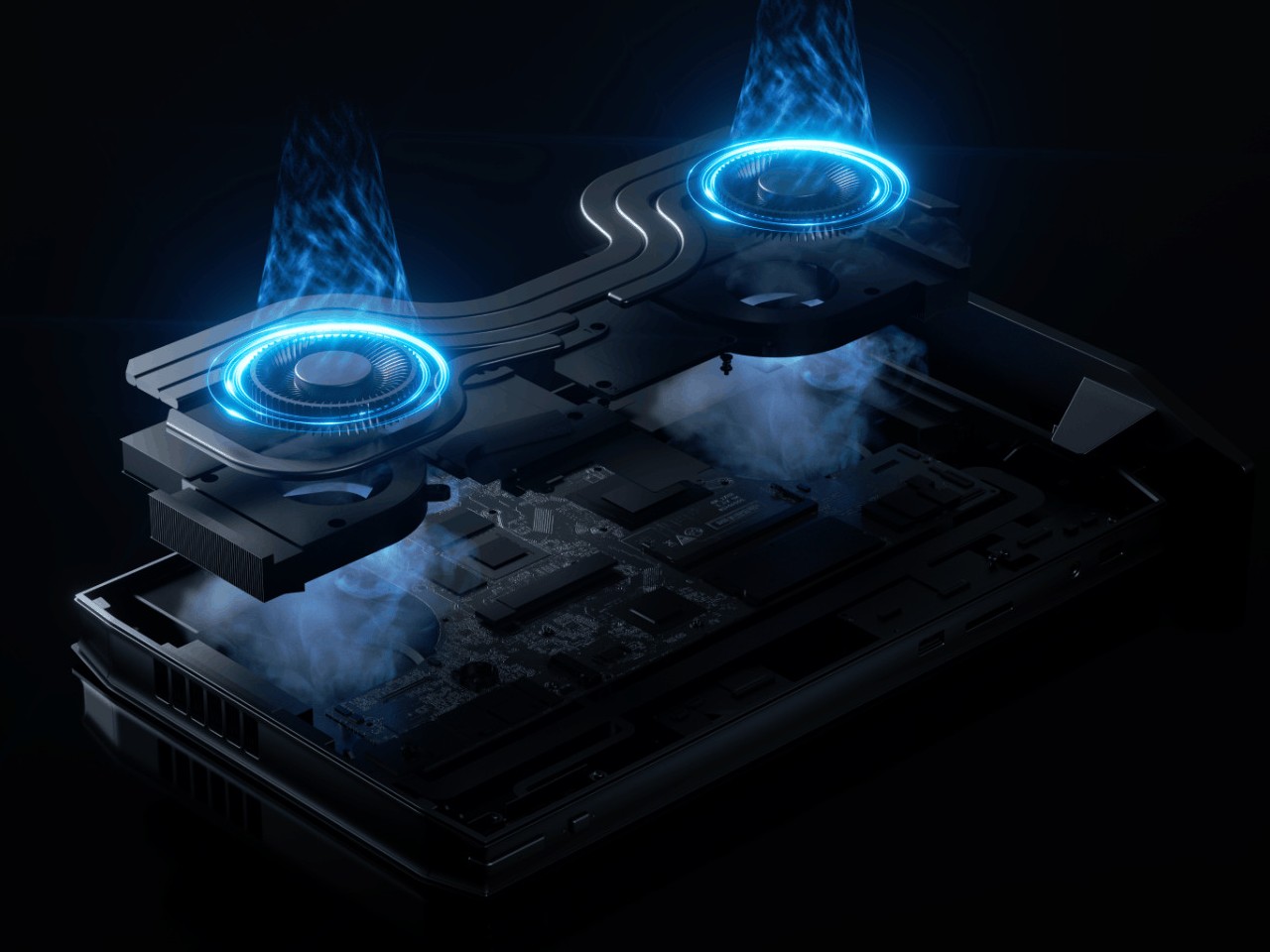
Inside, it’s powered by a Core i9 14900HX, not the AI-toting “Ultra” variant, that’s paired with an NVIDIA RTX 4070 of the mobile laptop kind. If that doesn’t scream “laptop computer,” then may the two thin fans situated on only one side of the chassis will. There might be some arguments that a gaming desktop will need more cooling than that, but gaming laptops have definitely survived with just as much. This demonstrates the sort of cognitive confusion on whether this computer is really a desktop or a laptop in disguise.
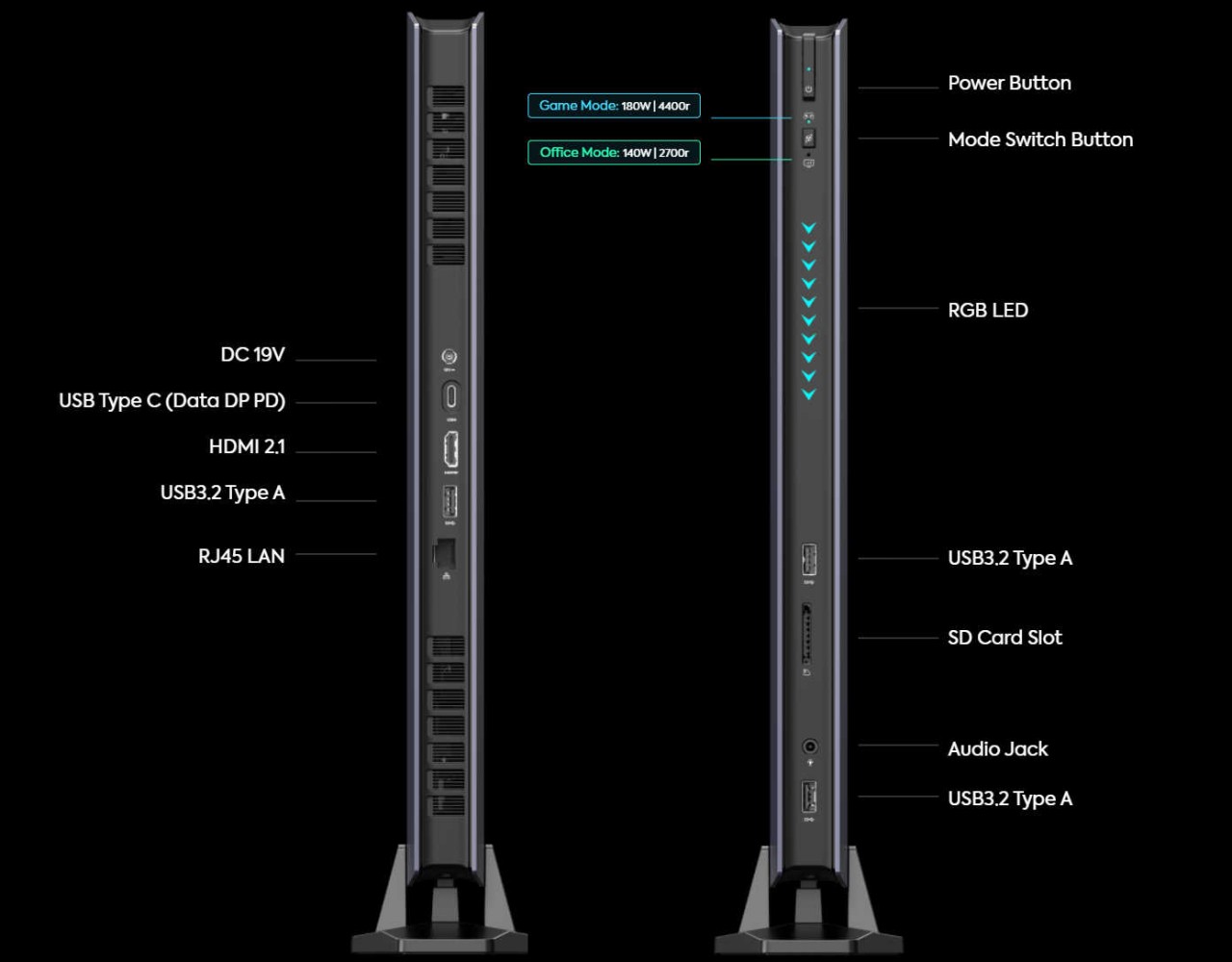
It definitely offers many things you’d only find in desktop computers, like support for up to 96GB of RAM and a plethora of ports for connecting almost anything imaginable. The latter is important since you can’t really use it on its own and will need to connect peripherals like, well, a monitor. On the other hand, some gamers might be on the fence about its actual performance, considering the constrained hardware and cooling.

The MINISFORUM AtomMan G7 Ti is definitely going to be an acquired taste, especially with a design that looks more like a classy desktop than a gaming rig. It does have some RGB lighting, but only on the front and limited to a string of LED “arrows.” Pricing and availability details remain undisclosed, but it’s definitely an interesting take on your typical gaming desktop computer, one that prioritizes appearances and space efficiency over raw power.
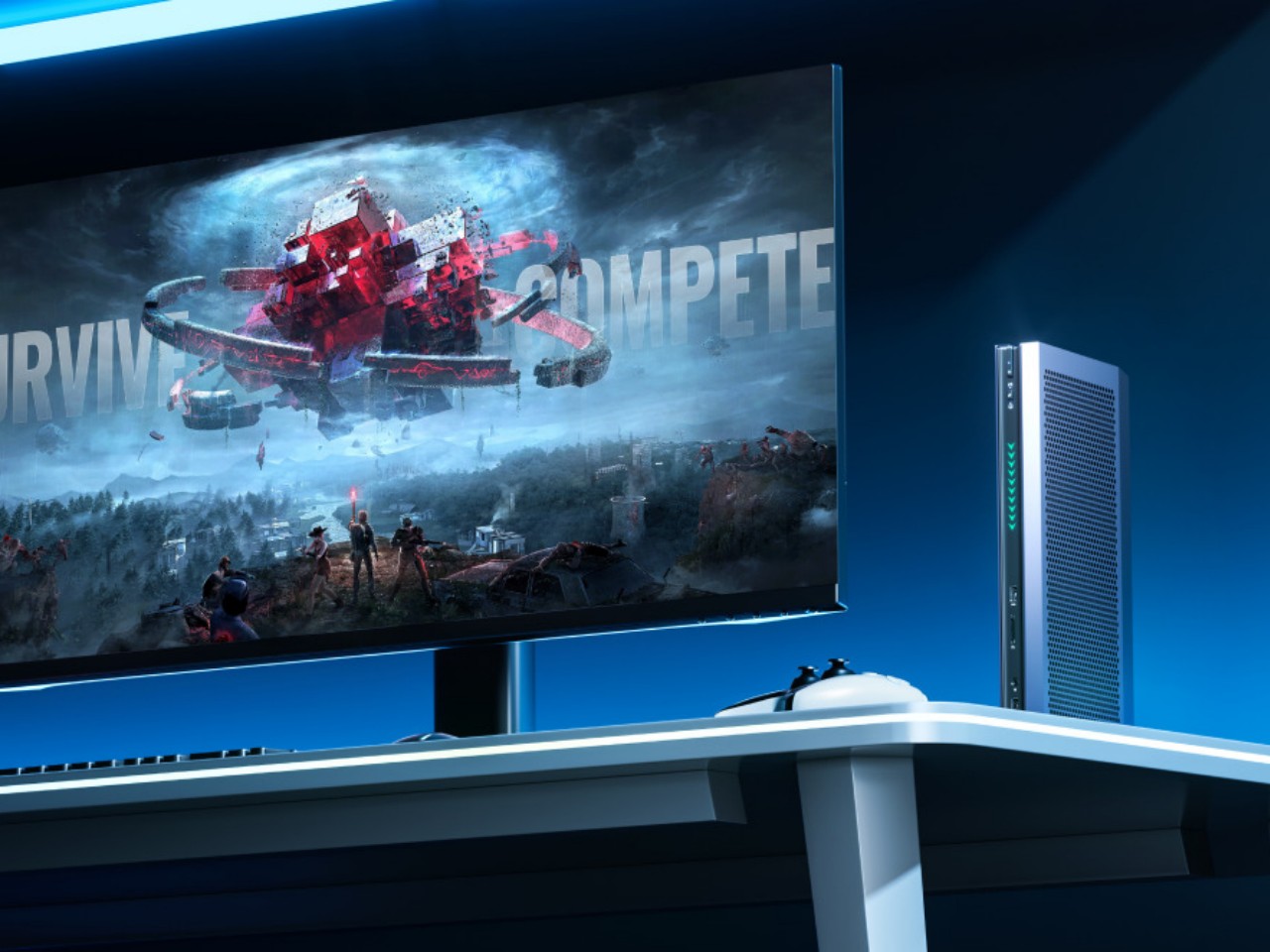
The post MINISFORUM AtomMan G7 Ti is a gaming laptop without a screen standing like a PS5 first appeared on Yanko Design.
ASUS ROG Swift OLED PG32UCDP: 32" dual-mode gaming monitor with AI Assistant, OLED tech, and user-friendly features. Versatile, bright, and responsive.
The post ROG Swift OLED PG32UCDP: A New Benchmark in Gaming Monitors first appeared on Trendy Gadget.

Nintendo Game Boy is one of the bestselling consoles of all time, owing to its competitive pricing and gamer-friendly features. Right from the original version to the consequent variants released in the 90s, the handheld gaming console has been popular across generations and inspired similar designs all these years.
While Nintendo has no plans to release a Game Boy version in the future, a concept design puts the handheld right in the realms of ultra-advanced gaming accessories. The gaming handheld visualized here solves your gaming needs indoors and outdoors sans any restrictions on whether you prefer playing it on the native small screen or the bigger one.
Designer: LFD Official


That’s possible with an integrated mini projector that can be taken right off the back of the handheld and positioned to project on any room wall, outdoor tent, or anything with a plain surface. This detachable projector module seamlessly switches the gameplay output, so you can enjoy games on the big canvas anytime. The transparent aesthetics of the handheld are inspired by the clear transparent version dubbed Game Boy Bros. released in 1995.


The display is much bigger, using most of the screen real estate with minimal bezels. Right below it are the gamepad controls that are much bigger and more tactile for improved gameplay and ergonomics. The tiny hardware of the gadget is enclosed in a transparent polycarbonate housing protected by the gorilla glass layer. To make this modern Nintendo handheld stand out, the designer envisions it in cool color options – Flame Scarlet, Greenery, Ultra Violet and Blue Grotto.


The back panel of the handheld holds the detachable projector in place and adjacent is the speaker to enjoy multimedia content and favorite games on the go. The UI of the gadget is heavily influenced by the Game Boy cartridge and the pixelated Gill Sans font evokes the neo-retro feel.











The post Transparent Game Boy with detachable projector promises uninterrupted gaming on the big screen first appeared on Yanko Design.
League of Legends is a ton of fun to play, and when you hit level 30, it becomes even more thrilling as you gain access to ranked play.
The post How to Level Up in League of Legends to 30 Fast first appeared on Trendy Gadget.
When trying to figure out whether Pokemon Go is dead or not, we must look into the statistics. In the first year, it made a whooping 1.03 billion.
The post Is Pokemon GO Dead? – A Look at the Pokemon GO Player Count first appeared on Trendy Gadget.
Camp Bomb Pop in Roblox offers a unique summer camp experience with exclusive items and influencer support, blending virtual fun with traditional summer joy.
The post Camp Bomb Pop: Virtual Summer Fun in Roblox first appeared on Trendy Gadget.
Some might think of gamepads and game controllers simply as accessories, but just like keyboards and mice, their design can greatly affect the user’s enjoyment. It isn’t just about ergonomics and features, though those are definitely definitely critical elements to such a device. A controller’s appearance can also bring delight to the user, especially when it comes in a form that appeals to their aesthetic tastes or interests. That’s why there’s no shortage of controllers sporting designs from popular video game franchises, official or otherwise, or why Microsoft opened up an Xbox Design Lab to let gamers mix and match designs to their heart’s content. This new special edition Xbox Controller offers a more futuristic flavor that also cares for our planet’s future in its own small way.
Designer: Microsoft


There is no small amount of fascination with devices that have transparent shells. Although it only shows contemporary hardware and designs, it gives a window into those technological mysteries that make them feel a little futuristic. No group of people loves this aesthetic more than gamers, and the new Xbox Wireless Controller – Sky Cipher Special Edition gives that feeling many will enjoy, at least if they’re fans of azure hues.


The controller might be blue, but it is far from looking sad. Unlike previous transparent Xbox controllers, Sky Cipher gives a complete and clear view of the device’s innards, at least from the front. Many of those internal parts are given a metallic silver sheen to make them really pop out and add to that futuristic flair. Unfortunately, the back of the controller is completely opaque, which is probably for the best since it has rubberized grips that would look unattractive on a transparent surface.


There are, of course, opaque parts in front as well, but this special edition manages to make them a bit more visually interesting. The triggers and D-Pad, in particular, have a metallic quality to them, which, alongside the silver internals, give the controller a more mechanical personality. It’s like a prop from some sci-fi show that would be used to control giant robots, ships, or drones. Presuming those machines of the future would have such a primitive mode of control, of course.

The Xbox Wireless Controller – Sky Cipher Special Edition is forward-looking in more ways than one. It is the first of its kind to use more environment-friendly packaging, one that completely removes single-use plastics from the box. It even saves paper by ditching the manual for a QR code, since gamers are more likely to go for electronic and online documentation anyway. The controller itself is, of course, still made from plastic anyway, but Xbox is hopefully inching slowly towards a more sustainable design for the true futuristic vision.

The post Xbox Sky Cipher Transparent Controller brings a touch of sustainability first appeared on Yanko Design.
Astro Bot, the Mario-like adventure game for PS5, developed by Sony Interactive Entertainment and team Asobi, is all set to arrive on September 6. On the same day debuts, the limited-edition Astro Bot controller, based on the reliable DualSense controller by Sony. The lively peripheral will cost a bit more than the normal wireless DualSense version, but it does come with some perks that’ll excite gamers.
The pint-sized robot featured in the game has become a modern-day PlayStation mascot, and to have a controller that blinks its googly eyes is exciting for fans. This limited edition Astro Bot PS5 DualSense gamepad is priced at $80 and will be available for pre-orders from August 9 at PlayStation Direct in the US and UK at select retailers.
Designer: Sony
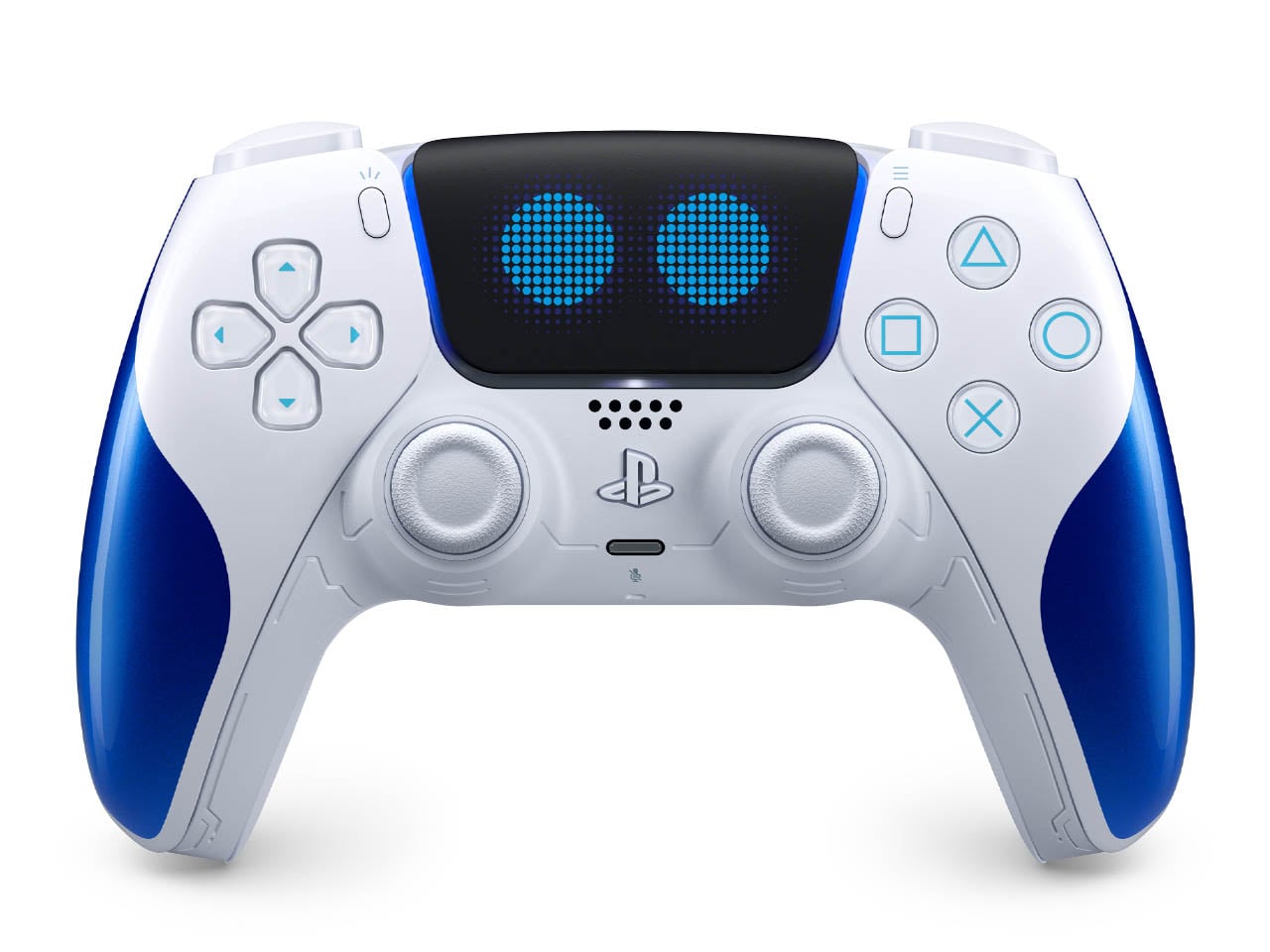
This special gamepad is unsurprising as Sony has previously launched themed controllers including the limited edition PlayStation 5 Spider-Man Miles Morales console. According to the Japanese consumer electronics giant, the themed wireless controller “is a work of art” and we can see why. The touchpad has robotic blue eyes that seem like blinking, while the handles and buttons have signature blue hues.
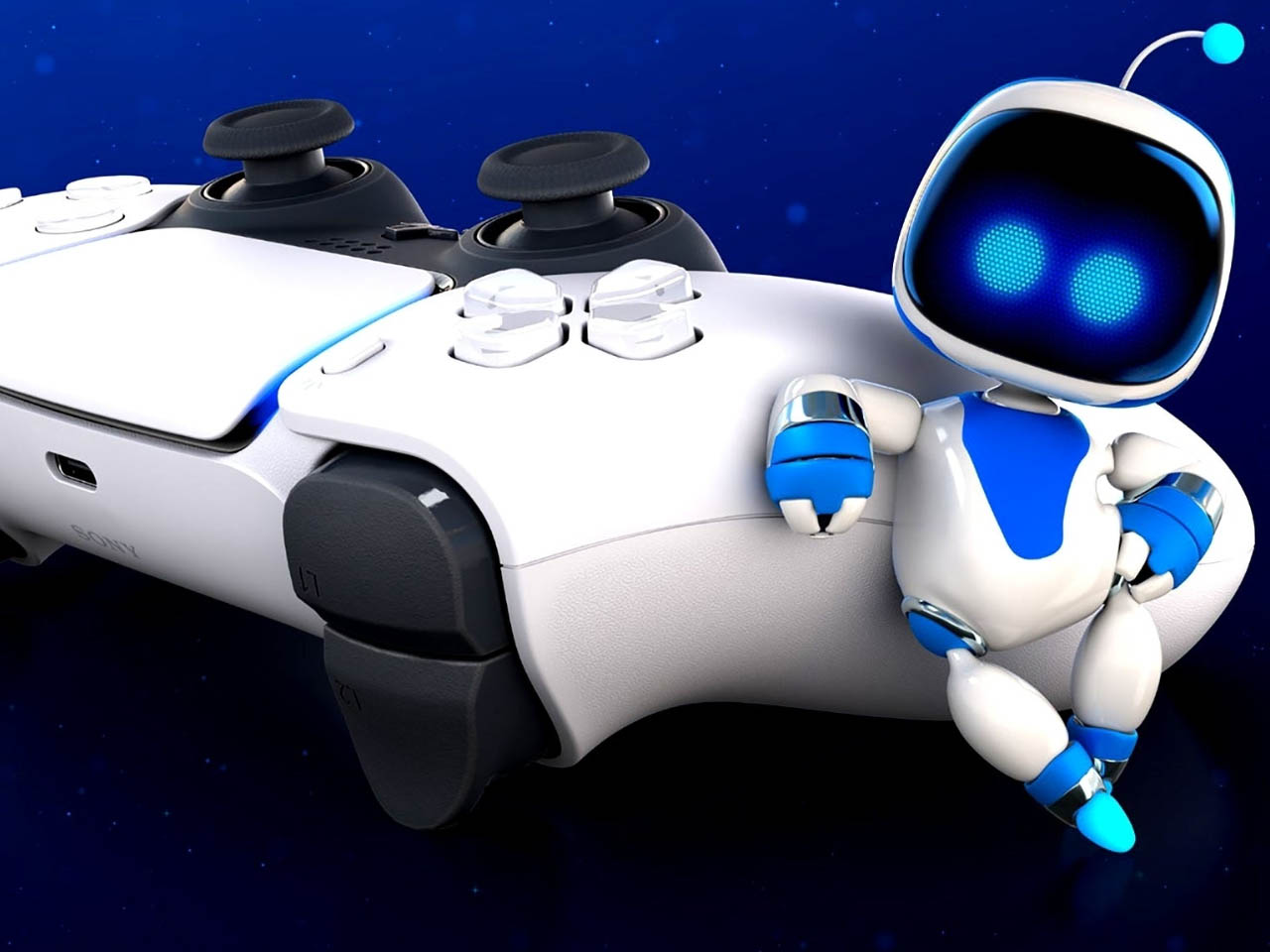
Another interesting thing is the number of textures (like grass, metal, sand, water, or glass) that the player feels through the haptic feedback. The adaptive trigger response further enhances the overall experience. Things like the feeling of the thruster rattle when the Barkster bulldog jetpack is deployed, the power-ups going through your fingers, or the impacts of the one-on-one battles in the boss fights. This Dual Speeder gadget can be felt as the motion-controlled input for the spaceship too.

The sensory feeling is matched with the sound effects for a complete experience of the upcoming title. The blue accents on the handles and buttons are carved in a sci-fi theme which makes owning this controller special. If you too love Astro Bot, it’ll be a wise decision to hit the pre-order button when the floodgates open. For those who already own the standard DualSense version, it would make more sense to go for the feature-loaded DualSense Edge controller.
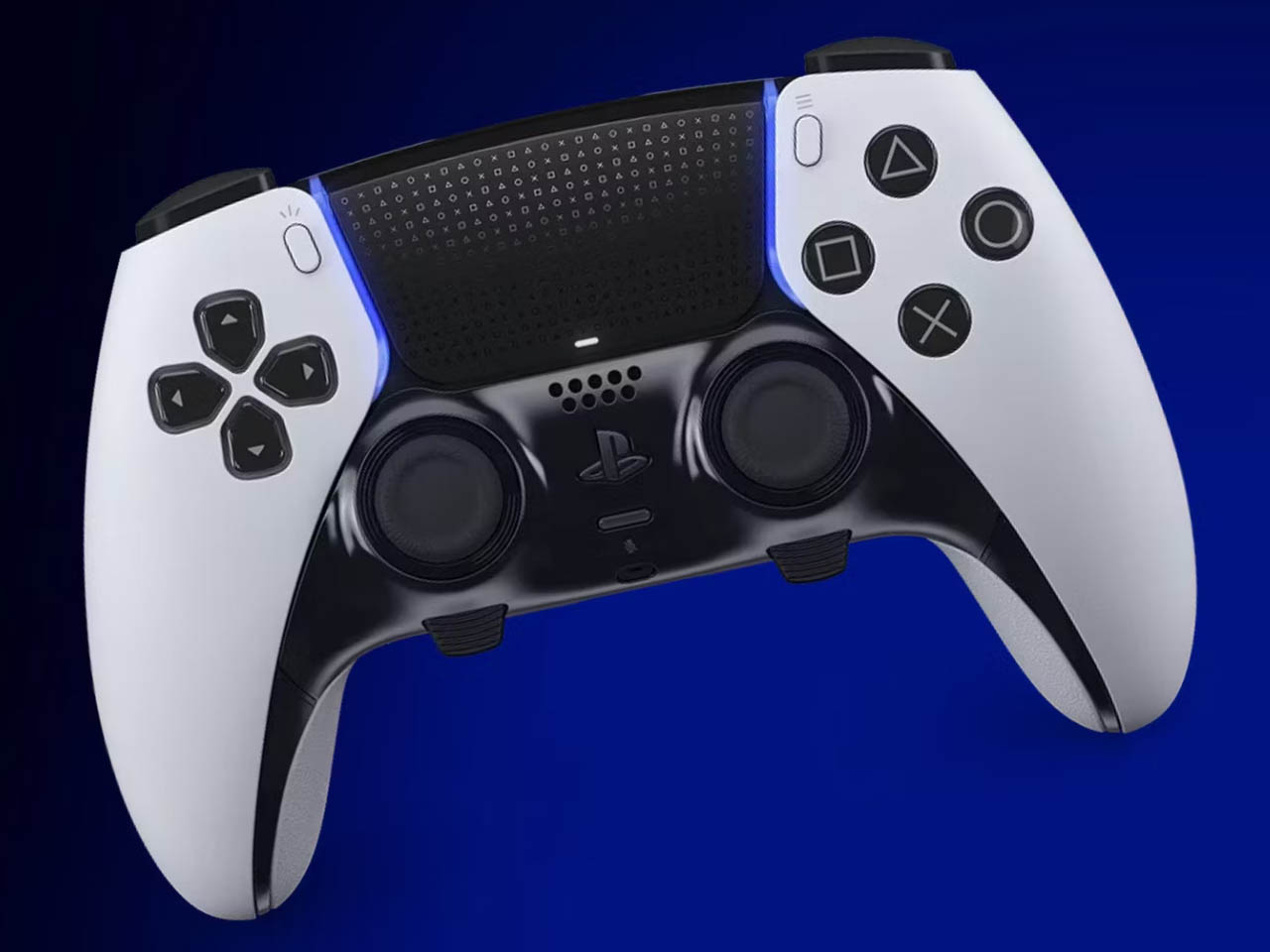
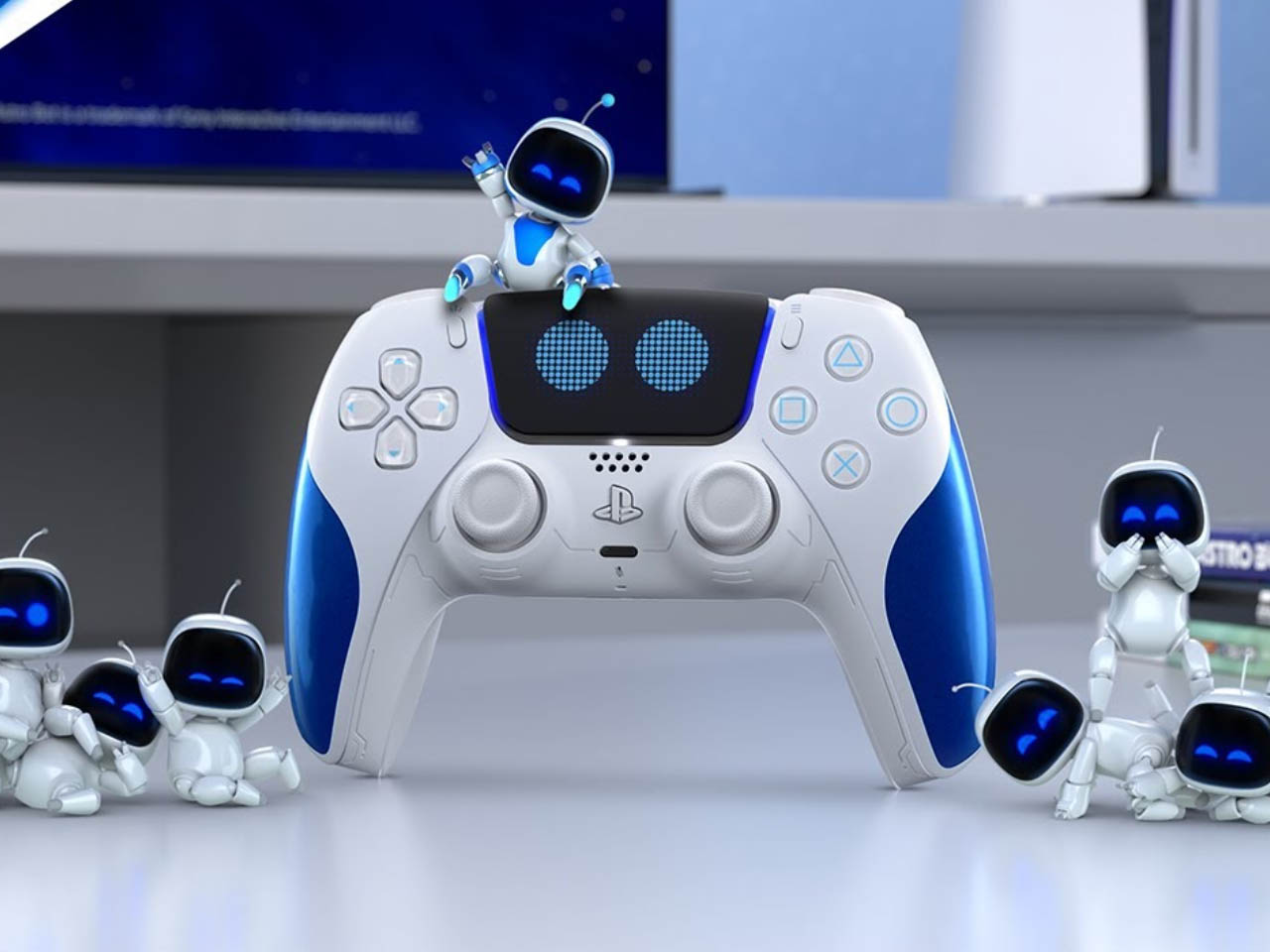
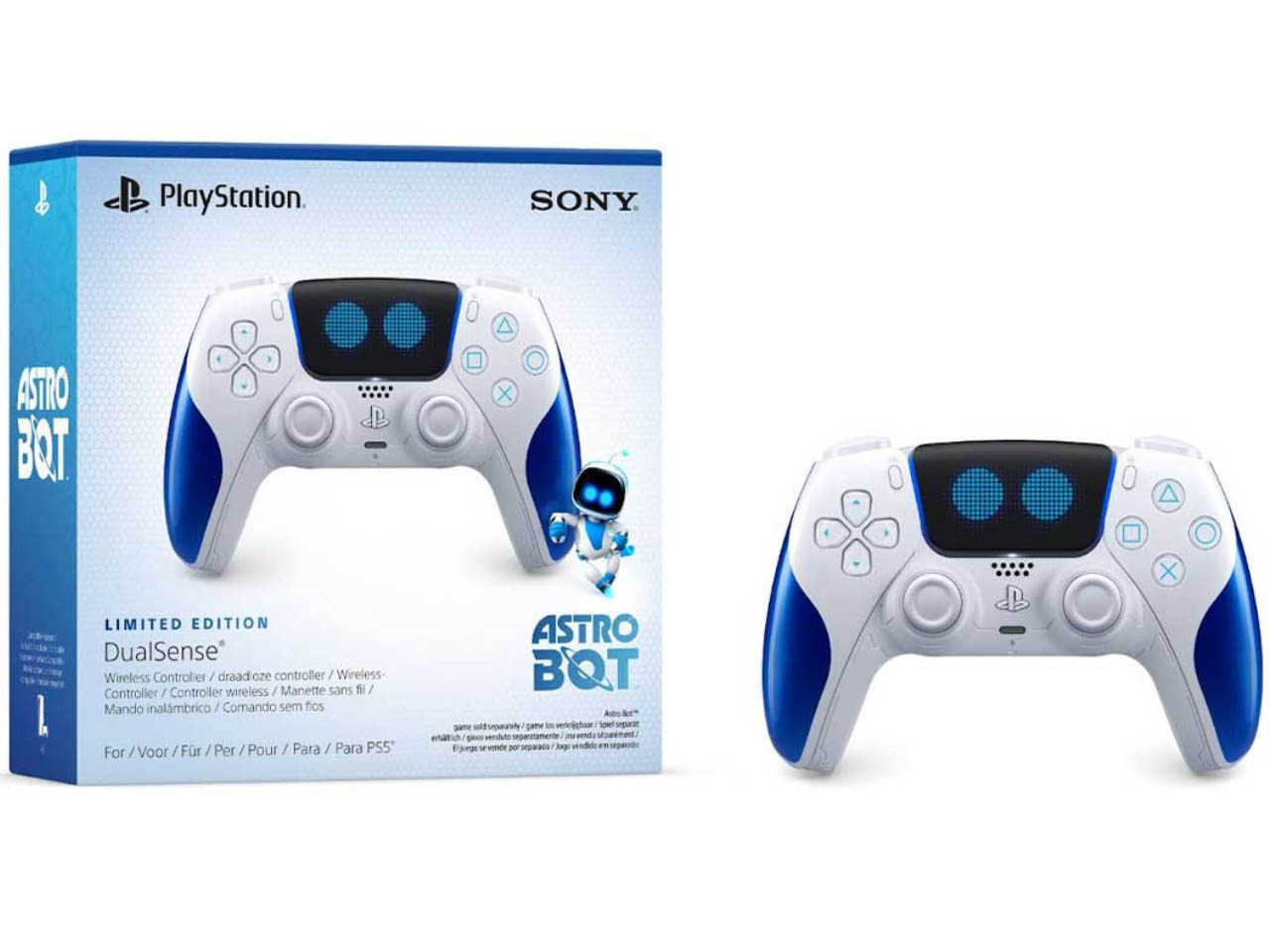
The post Sony Astro Bot-Edition PS5 Dual Sense controller is a livened-up peripheral with Googly Eyes first appeared on Yanko Design.

While most USB-C hubs go as far as providing a place to wirelessly charge your phone or TWS earbuds, the new Docking Station from JSAUX is more gamer-focused. Designed specifically for handheld gaming consoles like the Steam Deck, ROG Ally, and Lenovo Legion Go, this docking station gives you the advantage of connectivity as well as a nifty place to rest your gaming gadget while it charges.
Designer: JSAUX

Unlike previous JSAUX Docking Stations, the new 6-in-1 variant features a detachable console stand. This allows users to switch between two configurations: a docked mode for connecting the handheld to a monitor and wired peripherals, and a standalone mode for using the stand on its own. This flexibility caters to gamers who want a dedicated desk setup but also appreciate portability for on-the-go sessions.

USB hubs are a dime a dozen, but this one’s design is one of its highlights. It comes with a two-part form factor – the hub itself, with all the ports, and a base that holds the console. The hub plugs into the base, effectively becoming a backrest for your console (which is great because the console invariably ends up hiding your cables and clutter), but when you need to travel, detach them and slip them into your backpack and they aren’t as space-consuming as when assembled together.

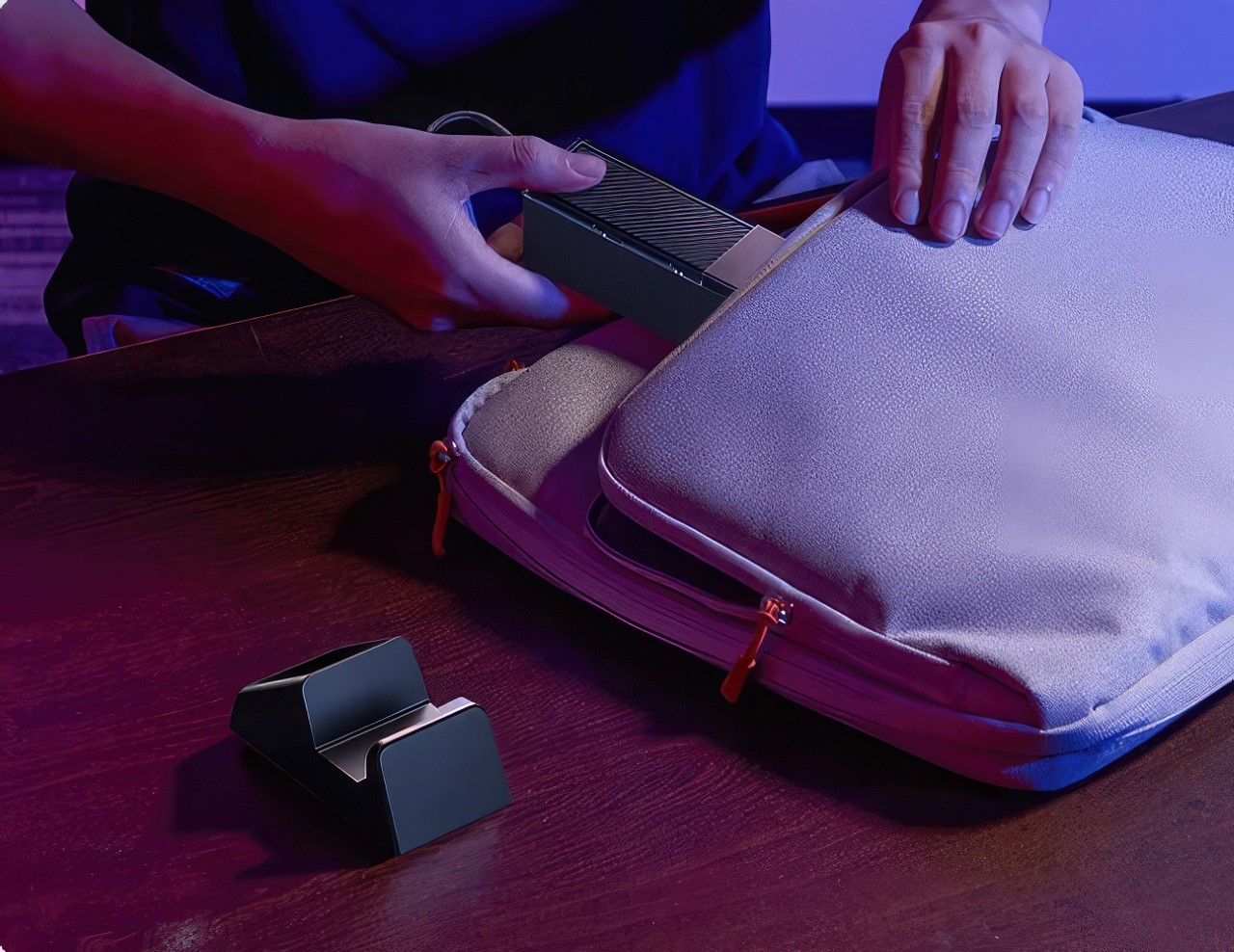
A USB-C port with 100W Power Delivery ensures your handheld console is always charged and ready for action. For those who rely on a wired internet connection for online gaming, a Gigabit Ethernet port provides a stable and high-speed link. Additionally, two USB-A 3.2 Gen 1 ports offer ample connectivity for peripherals like keyboards, mice, or external storage drives.

But perhaps the most impressive feature is the HDMI port. Capable of outputting stunning 4K visuals at a smooth 120Hz refresh rate, this port elevates the handheld gaming experience to a whole new level. Connect your console to a compatible monitor or TV, and enjoy your games in breathtaking detail.

As of now, the 6-in-1 Multifunctional Docking Station is available for purchase directly from the JSAUX website. While specific pricing details are currently unavailable, considering the previous model’s competitive price point of $31.99 on Amazon, it’s reasonable to anticipate a similarly attractive price tag for this new and improved version.

The post JSAUX 6-in-1 USB Hub also doubles as a Charging Dock for your Handheld Game Console first appeared on Yanko Design.